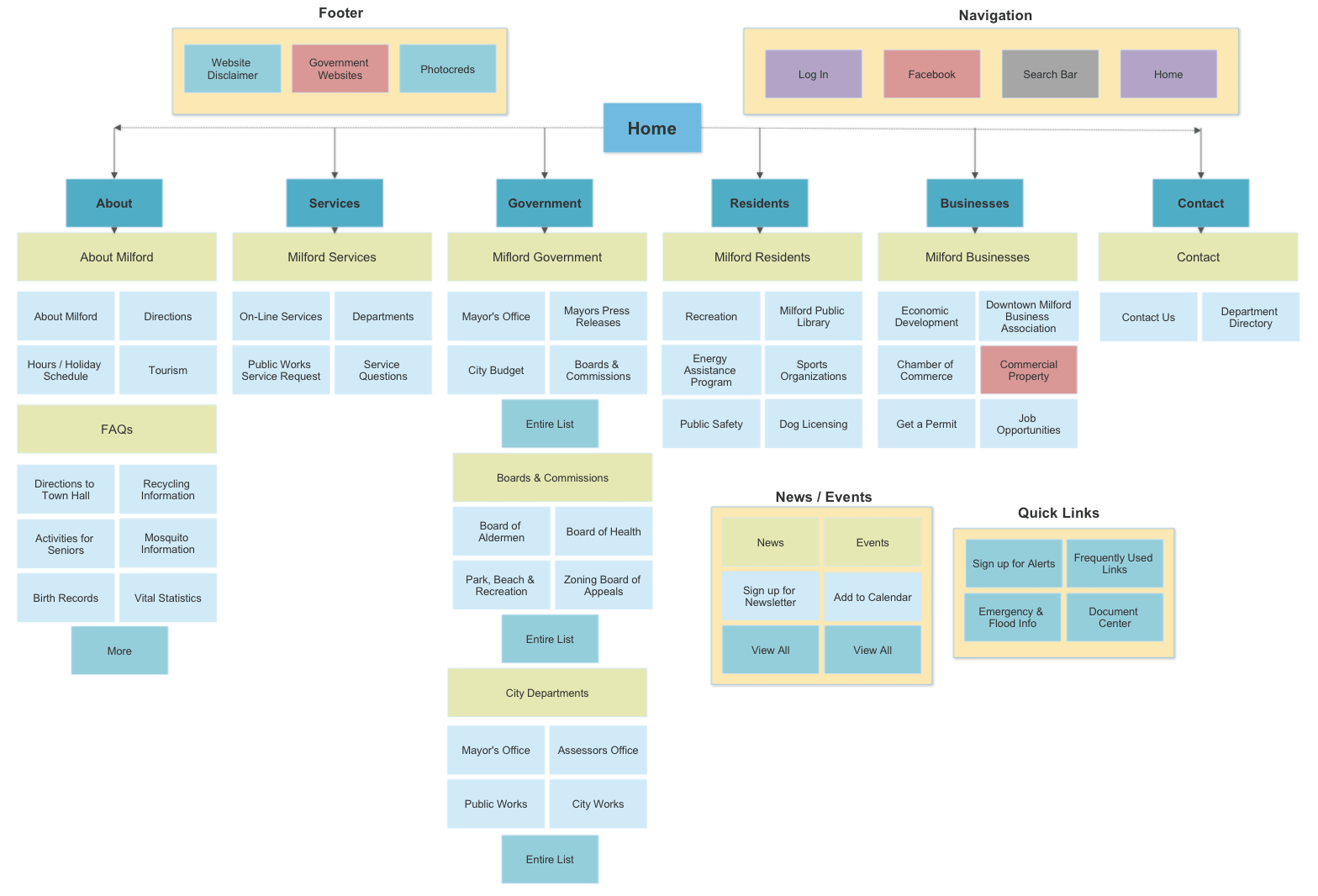
With an emphasis on ideation before prototyping, information architecture helps designers to organize the information they are presented with clearly and effectively to help create the best experience for users. In a world with evolving technology making tasks easier and quicker, time is a high expectation from users when using a website and app as they expect to be in and out as quickly as they opened it. The goal for designers however is to draw users in for as long as they can while still feeding them information quickly but having them explore through their designs almost like following a map.
In order to better understand information architecture, Dan Brown lists out his eight principles of information architecture that he finds most helpful for designers. They are the principles of objects, choices, disclosure, exemplars, front doors, multiple classification, navigation, and growth. And while all of these principles are very important in information architecture, there are a few that I wish to highlight during my experiences in creating site maps for websites and an app.
The principle of choices helps to lay out the essential choices for users and not make them overwhelmed with a long list of options making it difficult to find what they are looking for. This means making things like a list under the tabs shorter and only showing the important or popular things people interact with on the site. Being specific with what is within the tabs is good but can also backfire if too much information is given and it takes up space so hinting at the topic and helping the user infer what they seek is behind a click is important. The principle of exemplars helps to give users a glimpse of what’s to come should they decide to go farther into the site while still retaining what they’ve discovered already by giving examples. These examples can help to show the user where to begin on the site and avoid confusion of finding what they’re looking for or make them resort to the search bar.
And lastly the principle of front doors brings to issue the idea that people won’t always enter the site through the homepage. This means that users will need to be able to find their way back to the homepage if need be or more importantly navigate the site and its main features from the page they come in. Vital information such as contact info should be made accessible on places like the footer so that it is available on any page. This is also known as the principle of disclosure. Brown also brings to light the idea that everything should not be thrown at the user right away. The only things that are essential and that should be considered are those that help the user to understand what the site is about. That way when a person clicks on it they can know in that moment if what they are trying to find is offered on the site or hopefully if they can be redirected to it from the same site.
Works Cited
Babich, Nick. “A Beginner’s Guide to Information Architecture for UX Designers.” Adobe Blog, Adobe, 20 Nov. 2017, theblog.adobe.com/a-beginners-guide-to-information-architecture-for-ux-designers/.
Brown, Dan. “ASIS&T – The Information Society for the Information Age.” Bulletin August/September 2010, Sept. 2010, www.asis.org/Bulletin/Aug-10/AugSep10_Brown.html.




